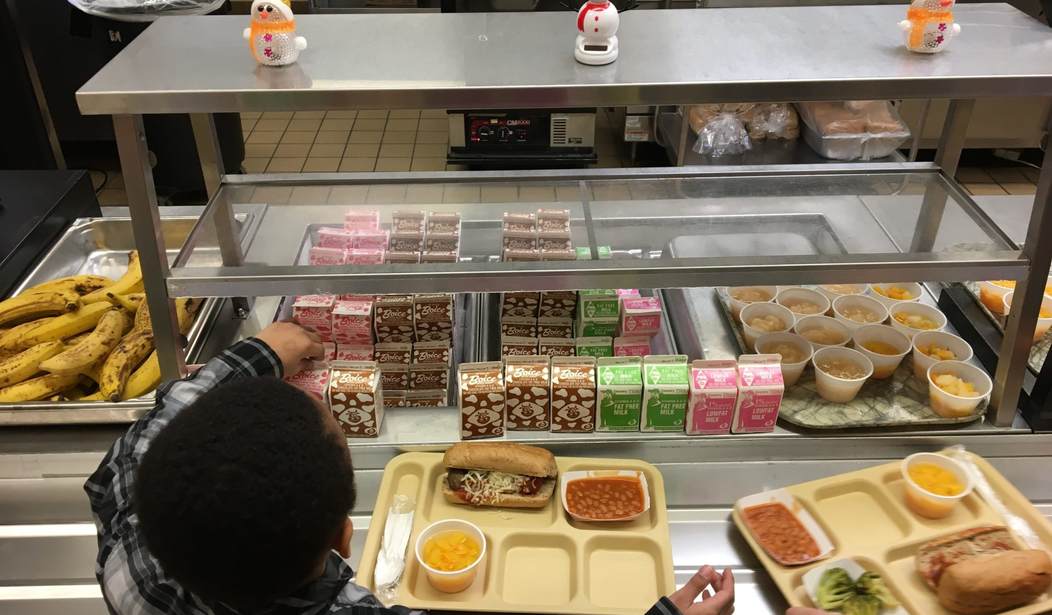Matt Antignolo, the director of food services for the Lamar Consolidated District outside of Houston, told CNN “it’s the worst part of the job” but he does it anyway: When a student doesn’t have enough money in his account for a $2.35 hot lunch, the kid is given a brown paper bag containing a cold cheese sandwich and a small milk.
Every other kid with a hot lunch knows why their fellow students are eating out of brown paper bags in the lunchroom. And the kids eating those cold cheese sandwiches know it. They’ve become victims of what is being called “school lunch shaming.”
Texas isn’t the only state dealing with the problem of kids who can’t afford a hot lunch.
The School Nutrition Association published a study in 2016 that showed nearly 75 percent of the nation’s public school districts were saddled with unpaid meal debt.
Becky Domokos-Bays, president of the School Nutrition Association, said there isn’t a school lunch lady in America who “wants to see a child go hungry or feel any shame during mealtime.”
“Schools today are working to minimize any stigma associated with free or reduced price meals and remove any barriers for students in need,” Domokos-Bays said.
But it is still happening.
Jon Bivens told al.com his son came home from Gardendale Elementary School with the words “I need lunch money” and smiley face stamped on his arm because the boy had less than $2 in his school lunch account.
In Fergus Falls, Minn., Dave Axel complained to Valley News Live that his granddaughter’s had was stamped with a “big green dollar sign” because her school lunch account was running low.
“To hear that your child or one of your relatives is running around in the school all day long and they got that dollar sign on their hand, I think it’s such a stigma,” said Axel.
New Mexico state Sen. Michael Padilla understands school lunch shaming, he told NPR. When the Democrat was a child he and others who didn’t have enough money for hot lunch were given a slice of bread “maybe with a little piece of cheese.”
The experience motivated Padilla to sponsor the Hunger-Free Students’ Bill of Rights Act, which Gov. Susana Martinez signed into law in April.
The legislation forces public schools to serve the same hot lunches to all kids, whether their parents can afford to pay for the food or not.
“Our biggest hope for this bill is that no student will have to contemplate what meal they are going to get,” Monica Armenta, a spokeswoman for Albuquerque Public Schools, told the New York Times.
The New Mexico Legislature may have been the first to outlaw “school lunch shaming,” but Texas state Rep. Helen Giddings (D) doesn’t want it to be the last.
Giddings has introduced HB 2159, legislation that would prohibit schools from singling out students who have no money in their lunch accounts.
“We can do better for our children — they deserve better,” Giddings told her fellow House members. “And I personally believe that the hottest places in hell are reserved for those who harm our children.”
But all the fire and brimstone in Giddings’ world will not make the problem go away. There are too many kids whose parents make too much money to qualify for a federally subsidized free school lunch yet can’t afford to pay full price for hot meals in the school cafeteria.
The USDA advised public school officials that the meal debt issued should be solved locally, without federal guidance.
“It is very difficult for school food professionals when a hungry child shows up in the cafeteria without the funds needed to pay for a meal,” the USDA advisory reads. “When families are unwilling or unable to repay recurring meal charges or to apply for free or reduced-price meals, schools may need to take action to maintain the financial solvency of their programs.”
But someone has to pay for the food. And it’s a problem that is only getting worse. The School Nutrition Association study showed 37.7 percent of the districts reported the number of students within the paid or reduced-price category who do not have funds to pay for breakfast or lunch had increased from the 2014-2015 to 2015-2016 school years.
What is a school district to do? Mark Masten, business manager of the Fergus Falls Public Schools, where Dave Axel’s granddaughter had her hand stamped, said the big, green dollar signs were part of a policy that had been in place for years.
“You’ve got to keep in mind at the elementary level many kids don’t understand the difference between that it’s actually shaming,” said Masten. “The child goes through the line without knowledge that there is money in their account or not, all they would know is that their hand was stamped, it’s a message for mom and dad about lunch money.”









Join the conversation as a VIP Member